Your cart is currently empty!
Blog
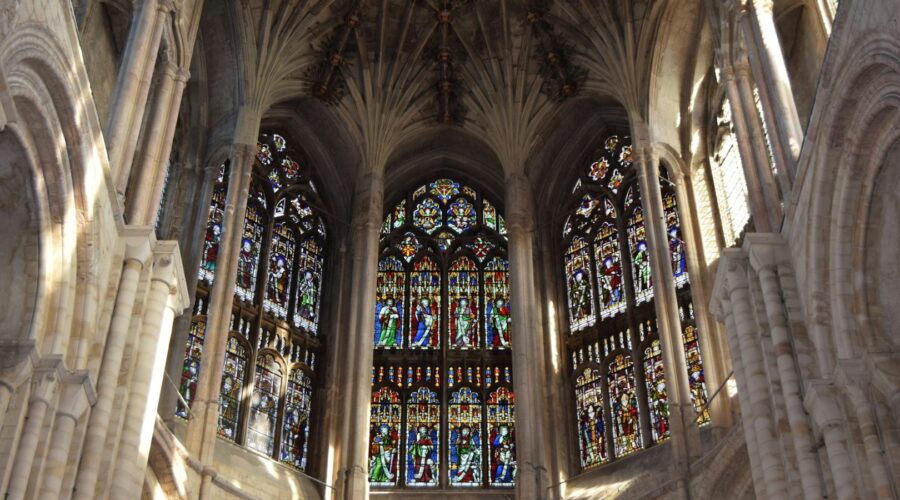
St. Peter Claver: The Apostle to the Slaves
Introduction
St. Peter Claver, a Jesuit priest from Spain, is known as the “Apostle to the Slaves” for his tireless work with the African slaves who were brought to the Americas during the trans-Atlantic slave trade. He dedicated his life to alleviating their suffering and providing them with spiritual and physical comfort.
Early Life and Call to Service
Birth and Upbringing
Peter Claver was born on June 26, 1580, in Verdú, Spain. His parents, Juan and Ana Claver, were devout Catholics who instilled in him a love for God and compassion for the marginalized.
Education and Ordination
After completing his studies at the Jesuit college in Barcelona, Peter joined the Society of Jesus in 1602. He was ordained a priest in 1615 and was sent to Cartagena, Colombia, in 1616.
Work with Enslaved People
Upon arriving in Cartagena, Peter was horrified by the conditions in which the enslaved people were forced to live. He witnessed their physical abuse, psychological torment, and spiritual neglect.
Ministry of Compassion
Determined to make a difference, Peter began his ministry to the slaves by offering them spiritual guidance, medical care, and basic necessities. He spent countless hours visiting the slave ships and hospitals, providing comfort and hope to the sick, dying, and disheartened.
Defense of Human Rights
Peter Claver went beyond providing basic care to the slaves. He courageously spoke out against the injustices and brutality they faced. He denounced the slave trade and demanded that the enslaved people be treated with dignity and respect.
Legacy and Impact
Canonization
After 35 years of tireless service, Peter Claver died in Cartagena on September 8, 1654. He was canonized by Pope Leo XIII in 1888.
Inspiration for Abolitionism
Peter Claver’s life and work inspired numerous abolitionists throughout history. His unwavering commitment to the dignity of all human beings helped to galvanize the movement to end slavery.
Table: Key Aspects of Peter Claver’s Ministry
| Aspect | Description |
|—|—|
| Spiritual Guidance | Provided Mass, confessions, and prayers to comfort and strengthen the enslaved people. |
| Medical Care | Treated the sick and wounded, offering basic medical supplies and bandages. |
| Basic Necessities | Distributed food, water, clothing, and shelter to ease the suffering of the slaves. |
| Advocacy | Spoke out against the slave trade and demanded humane treatment for the enslaved people. |
| Education | Taught the slaves basic literacy and numeracy skills whenever possible. |Tips for Following Peter Claver’s Example
- Be compassionate towards all those who are suffering.
- Use your voice to speak up against injustice and inequality.
- Offer practical help to those in need, even if it seems small.
- Educate yourself about social issues and the struggles faced by marginalized communities.
- Pray for the conversion of hearts and the end of all forms of slavery.
Conclusion
St. Peter Claver stands as a beacon of hope and inspiration for all who seek to follow Christ’s example of selfless love and service. His unwavering commitment to the dignity of the enslaved people paved the way for the abolition of slavery and continues to challenge us to work for justice and equality today.
May we be inspired by Peter Claver’s life and legacy to extend compassion and advocate for the rights of all who are marginalized and oppressed.
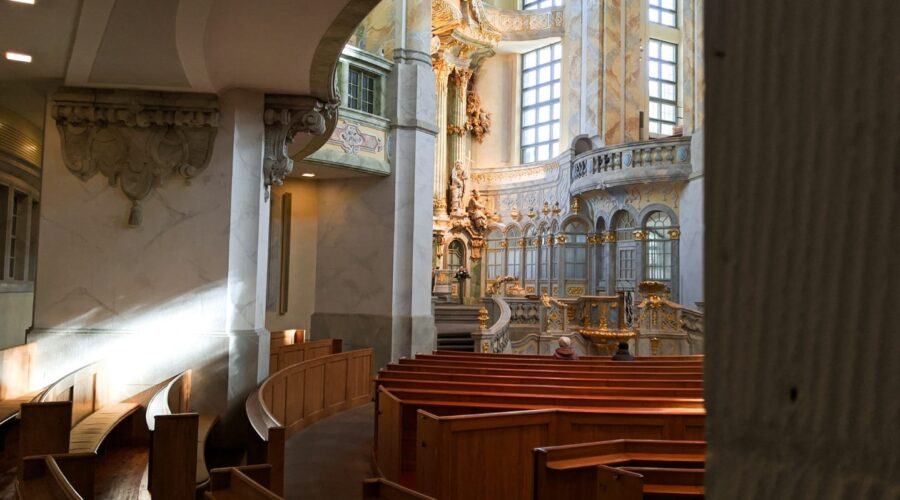
Missio Dei: The Mission of God
Introduction
Missio Dei, Latin for “mission of God,” is a theological concept that describes the belief that God is actively involved in the world and has a purpose for all creation. It is based on the idea that God is not distant or indifferent but is intimately involved in the lives of individuals and the history of the world.
The Biblical Basis of Missio Dei
The concept of Missio Dei finds its roots in the Bible. In the Old Testament, God’s mission is revealed through his covenants with Abraham, Isaac, and Jacob, promising them land, descendants, and blessing. In the New Testament, Jesus Christ is presented as the ultimate embodiment of God’s mission, sent to reconcile humanity with God and establish God’s kingdom on earth.
The Mission of Jesus Christ
- Redemption: Jesus came to save humanity from sin and reconcile them with God (John 3:16-17).
- Reconciliation: Jesus broke down the barriers between Jews and Gentiles, uniting them in one body (Ephesians 2:14-18).
- Kingdom of God: Jesus proclaimed and established the kingdom of God, a realm of God’s reign and presence on earth (Luke 4:43).
The Role of the Church in Missio Dei
The church is called to participate in God’s mission by continuing the work of Jesus Christ in the world. This includes:
Evangelism and Discipleship
- Proclaiming the gospel: Sharing the message of Jesus Christ and inviting people to respond to his call for salvation (Matthew 28:19-20).
- Making disciples: Nurturing new believers, helping them grow in faith and become mature followers of Christ (Matthew 28:19-20).
Social Justice and Transformation
- Caring for the poor and marginalized: Extending God’s love and compassion to those in need (Matthew 25:31-46).
- Advocating for justice: Challenging injustice and promoting human dignity, in line with God’s desire for a just and equitable world (Amos 5:24).
- Worshiping God: Glorifying God through worship, prayer, and the sacraments (Psalm 95:6-7).
- Growing spiritually: Cultivating a deep personal relationship with God through prayer, Bible study, and Christian fellowship (John 15:5).
Worship and Spirituality
Aspects of Missio Dei
Trinity and Missio Dei
The doctrine of the Trinity is foundational to Missio Dei. The Father, Son, and Holy Spirit are all involved in God’s mission in distinct yet cooperative ways.
Creation and Missio Dei
God’s mission extends to all creation. He created the world for his glory and to display his nature and love.
History and Missio Dei
God is actively involved in human history, working through individuals, nations, and events to accomplish his purposes.
Culture and Missio Dei
Missio Dei requires an understanding of the cultures in which we live to effectively engage with and minister to people.
Renewal and Missio Dei
Missio Dei involves a continuous process of renewal and transformation, both individually and corporately.
Conclusion
Missio Dei is a multifaceted and dynamic concept that encapsulates the belief that God is actively involved in the world and has a purpose for all creation. The church is called to participate in this mission through evangelism, social justice, worship, and spiritual growth. By embracing Missio Dei, we become partners with God in his work of redemption, reconciliation, and transformation.
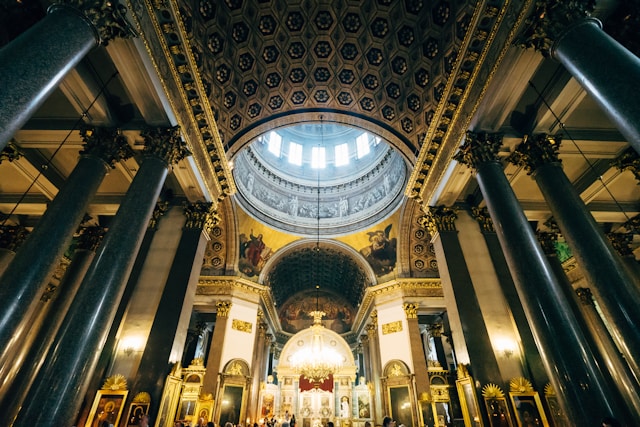
Discover the Rich History and Spiritual Significance of St. George Orthodox Church
A Journey Through Time and Tradition
Nestled amidst the vibrant tapestry of Orthodoxy, St. George Orthodox Church stands as a testament to centuries of faith, tradition, and spiritual renewal. Its hallowed halls have borne witness to countless prayers, baptisms, marriages, and moments of profound connection with the divine.
Historical Roots
Founding of the Parish
The story of St. George Orthodox Church began in the late 19th century, when a group of Russian immigrants yearned for a spiritual home in a foreign land. In 1894, they established the first Orthodox parish in the area, under the protection of St. George, the valiant martyr.
Early Years and Growth
The early years of the parish were geprägt by hardship and perseverance. Despite limited resources, the community gathered in a rented hall, holding services in the Russian language. Gradually, as the parish grew, they acquired a permanent church building in 1907.
Adaptations and Transitions
Over the decades, St. George Orthodox Church adapted to the changing needs of its congregation. Services began to be offered in English alongside Russian, reflecting the evolving demographics of the community. The church also expanded its outreach programs, offering Sunday schools, youth groups, and charitable services.
Architectural Splendor
A Neo-Byzantine Masterpiece
The current church building, constructed in 1961, is an architectural masterpiece inspired by the rich traditions of Byzantine churches. Its soaring dome, intricate mosaics, and graceful arches create an awe-inspiring ambiance.
Iconography and Symbolism
The interior of the church is adorned with stunning iconography, depicting biblical scenes, saints, and Orthodox theological concepts. These icons serve as visual expressions of the faith and invite contemplation and spiritual reflection.
Liturgical Practices
The Divine Liturgy
The central act of worship in St. George Orthodox Church is the Divine Liturgy, a Eucharistic service that embodies the essence of Orthodox faith. The Liturgy is celebrated every Sunday and on major feast days, and is a time of profound communion with God.
Other Services and Prayer
In addition to the Divine Liturgy, the church also offers other liturgical services throughout the year, including Vespers, Matins, and Compline. These services provide opportunities for prayer, repentance, and spiritual enrichment.
Community and Outreach
A Welcoming and Inclusive Community
St. George Orthodox Church is a welcoming and inclusive community that embraces people from all walks of life. The parish offers a variety of programs and activities to foster fellowship and spiritual growth.
Outreach and Social Ministry
Beyond its walls, the church actively engages in outreach and social ministry. It provides meals to the needy, offers English classes for immigrants, and supports various local charities. Through these initiatives, St. George seeks to extend the love and teachings of Christ to the wider community.
Spiritual Guidance and Formation
Priest and Pastoral Staff
St. George Orthodox Church is led by a priest and a dedicated pastoral staff who provide spiritual guidance, support, and counseling to the congregation. They are deeply committed to fostering a nurturing and Christ-centered environment.
Education and Formation
The church offers a comprehensive program of religious education for all ages, including Sunday school, adult education classes, and retreats. These programs aim to deepen understanding of Orthodox theology, history, and practices.
Conclusion
St. George Orthodox Church is a vibrant and enduring spiritual sanctuary that has played a pivotal role in the lives of countless individuals over the centuries. Its rich history, architectural beauty, liturgical practices, and commitment to community and outreach make it a beacon of faith and inspiration in the modern world.
Whether you are an Orthodox Christian seeking a home, an explorer of religious traditions, or simply someone searching for spiritual connection, St. George Orthodox Church invites you to embark on a journey of faith, tradition, and encounter with the divine.
Contact Information
St. George Orthodox Church
123 Main Street
Anytown, CA 12345
(555) 123-4567
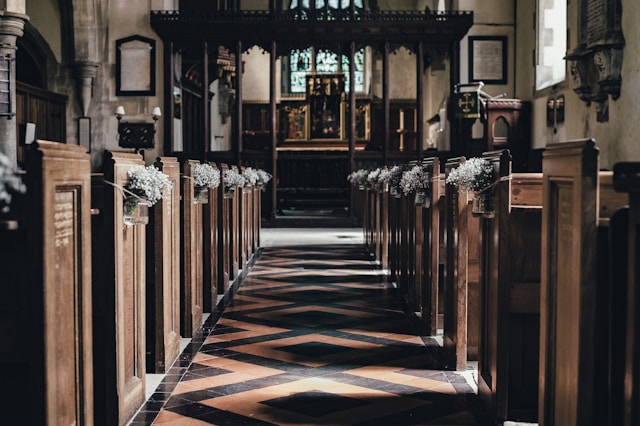
Discover the Vibrant Community of Westover Hills Church: A Haven for Spiritual Growth and Connection
About Westover Hills Church
Nestled in the heart of San Antonio, Texas, Westover Hills Church stands as a testament to the power of faith and community. Founded in 1954, the church has grown from a humble congregation to a vibrant spiritual center that welcomes people from all walks of life.
Westover Hills Church is rooted in the Wesleyan tradition, emphasizing the importance of personal experience, social justice, and a life transformed by the love of God.
Core Values
- Love: Embracing others with compassion, kindness, and acceptance.
- Grace: Extending forgiveness and unmerited favor, recognizing that we are all in need of God’s mercy.
- Service: Using our gifts and abilities to make a positive impact on our community and the world.
- Growth: Encouraging spiritual and personal development through study, prayer, and mentorship.
- Excellence: Striving for the highest standards in all aspects of our ministry.
Ministries and Programs
Worship Services
Westover Hills Church offers a variety of worship services throughout the week, including traditional, contemporary, and blended services. Each service features inspiring music, engaging sermons, and opportunities for prayer and fellowship.
Life Groups
Life groups are small groups that meet regularly to connect with others, share life experiences, and grow in their faith. These groups provide a supportive and welcoming environment for building relationships and deepening spiritual understanding.
Children’s Ministry
Westover Hills Church has a vibrant children’s ministry that offers age-appropriate programs and activities. These programs are designed to nurture the spiritual development of children and help them discover God’s love.
Youth Ministry
The youth ministry provides a dynamic and supportive environment for teenagers. Through youth groups, retreats, and community service projects, teens are encouraged to explore their faith, build lasting friendships, and make a positive impact.
Community Outreach Programs
Westover Hills Church is deeply involved in serving the San Antonio community. Through various outreach programs, the church provides support to those in need, including food drives, clothing donations, and mentorship programs.
Special Events
Throughout the year, Westover Hills Church hosts a variety of special events, including concerts, conferences, and community gatherings. These events provide opportunities for fellowship, inspiration, and engagement with the wider community.
Leadership
Westover Hills Church is led by a dedicated team of pastors and staff who are passionate about creating a welcoming and supportive environment for spiritual growth and community building.
Contact Information
For more information about Westover Hills Church, please visit their website at westoverhills.org or contact them at [email protected].
Conclusion
Westover Hills Church is a dynamic and vibrant spiritual community that offers a welcoming and supportive environment for personal and spiritual growth. Through its diverse ministries, programs, and community outreach efforts, the church serves as a beacon of hope and a source of inspiration for people of all ages.
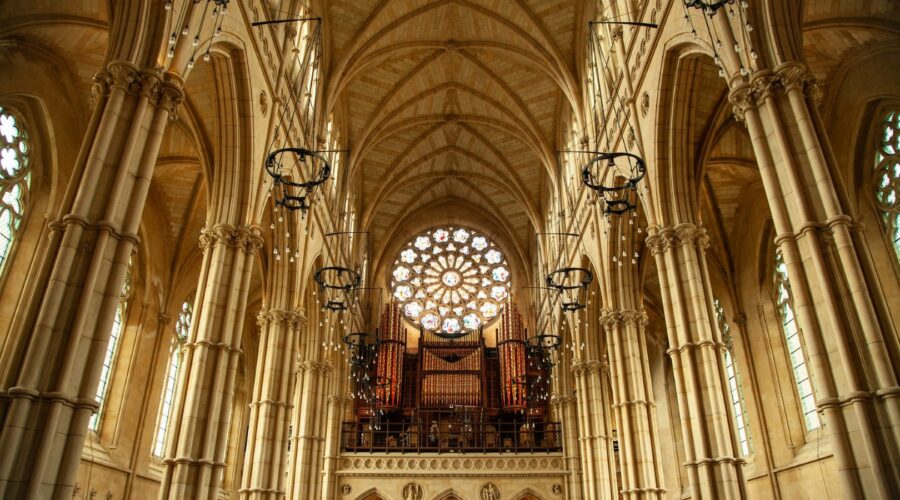
St. John Chrysostom: The Golden-Tongued Preacher
Introduction
St. John Chrysostom, born in Antioch in 349 AD, was a renowned theologian, orator, and Archbishop of Constantinople. Known for his eloquent sermons and writings, he earned the title “Chrysostom,” meaning “golden-mouthed.” This comprehensive guide explores the life, teachings, and enduring legacy of St. John Chrysostom.
Early Life and Education
John’s privileged upbringing provided him with an excellent education. He studied rhetoric and philosophy in Antioch under the renowned teacher Libanius. His oratorical skills quickly became evident, and he gained recognition as a promising public speaker.
Priestly Career
Upon his baptism, John renounced his legal career and was ordained a deacon in 381 AD. His powerful sermons and charitable works earned him the attention of Flavian, Bishop of Antioch, who ordained him a priest in 386 AD.
Sermons and Oratory
Chrysostom’s preaching was characterized by its eloquence, depth of knowledge, and practical application. He preached on a wide range of topics, including the Bible, Christian morality, and social justice. His sermons were renowned for their clarity, persuasive power, and emotional appeal.
Liturgical Reforms
As a priest, Chrysostom implemented several liturgical reforms aimed at improving the participation and devotion of the faithful. He introduced the practice of antiphonal psalmody, in which two choirs sang alternating verses. He also composed hymns and prayers that became integral to the Eastern Orthodox liturgy.
Bishop of Constantinople
In 397 AD, Chrysostom was elected Bishop of Constantinople, the imperial capital of the Eastern Roman Empire. His elevation to such a prominent position marked a turning point in his life and ministry.
Theological Controversies
As Bishop, Chrysostom confronted several theological controversies, particularly the Origenist heresy, which overemphasized the role of reason in faith. He condemned Origenism as a threat to the integrity of Christian doctrine.
Social Justice Advocacy
Chrysostom was a vocal advocate for social justice. He denounced corrupt officials, criticized the wealthy for their indifference to the poor, and established hospitals and orphanages to care for the needy. His outspoken advocacy earned him both admirers and enemies.
Exile and Martyrdom
Chrysostom’s outspokenness and confrontational style eventually led to his downfall. In 403 AD, Empress Eudoxia and Archbishop Theophilus of Alexandria conspired to have him exiled from Constantinople.
Chrysostom spent the last three years of his life in exile, enduring harsh conditions and deprivation. Despite his suffering, he continued to write and preach.
In 407 AD, he died in exile in Comana, Pontus. His body was later returned to Constantinople with great reverence.
Legacy
St. John Chrysostom left an enduring legacy as one of the greatest theologians and preachers of the early Church. His writings, including his sermons, homilies, and commentaries on Scripture, continue to inspire and instruct Christians today.
Feast Day
Chrysostom’s feast day is celebrated on September 13th in the Catholic Church and Orthodox Church. His relics are enshrined in the Church of San Giovanni Crisostomo in Rome.
Patronage
Chrysostom is the patron saint of orators, preachers, and goldsmiths. His teachings continue to guide and inspire Christians in their pursuit of spiritual growth, social justice, and eloquence in speech.
Influence on Preaching and Liturgy
Chrysostom’s influence on Christian preaching is profound. His emphasis on clarity, relevance, and practical application has shaped the practices of preachers throughout history.
His liturgical reforms have had a lasting impact on the Eastern Orthodox liturgy. The antiphonal psalmody, hymns, and prayers he introduced continue to be central elements of Orthodox worship today.
Conclusion
St. John Chrysostom, the “Golden-Tongued Preacher,” remains an iconic figure in the history of Christianity. His eloquent sermons, theological depth, and unwavering commitment to social justice continue to inspire and challenge Christians today. His legacy as a theologian, orator, and advocate for the poor serves as a reminder of the transformative power of faith, eloquence, and compassion.
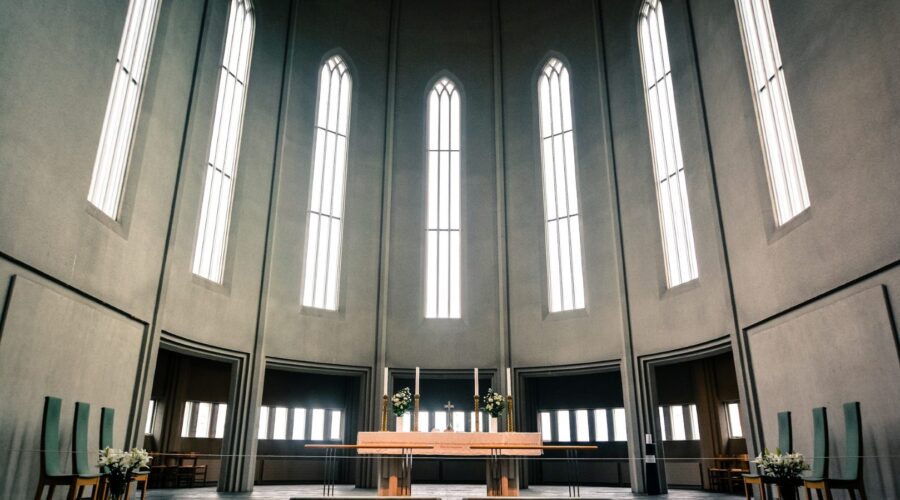
St. Francis de Sales Church: A Spiritual Haven in the Heart of Philadelphia
Nestled in the vibrant neighborhood of University City in Philadelphia, Pennsylvania, stands the majestic St. Francis de Sales Church. This magnificent Neo-Gothic masterpiece is a testament to the enduring power of faith and the beauty of architectural artistry.
A Journey Through Time
The story of St. Francis de Sales Church begins in 1846, when a small group of Irish immigrants established a parish in the area. As the community grew, so did the need for a larger and more permanent place of worship. In 1873, the cornerstone was laid for the current church.
The church was designed by renowned architect Patrick Charles Keely, who is known for his exquisite Gothic revival designs. The construction process took over 20 years, and the church was finally completed in 1896.
A Symphony of Stone and Spires
St. Francis de Sales Church is a masterpiece of Gothic architecture, characterized by its soaring spires, graceful arches, and intricate stonework. The exterior of the church is adorned with sculptures, gargoyles, and stained glass windows that depict scenes from the life of St. Francis de Sales.
The interior of the church is equally impressive. The nave, which stretches the length of the building, is lined with elegant stained glass windows that bathe the space in colorful light. The sanctuary, with its intricate altar, pulpit, and choir loft, is a focal point for worship and contemplation.
A Vibrant Community of Faith
St. Francis de Sales Church is more than just a beautiful building; it is a thriving parish community. The church offers a wide range of programs and events for people of all ages, including:
- Sunday and weekday Masses
- Baptisms, confirmations, and weddings
- Religious education for children and adults
- Social and outreach programs
- Support groups and counseling
The parish community is deeply engaged in social justice issues and partners with local organizations to provide assistance to those in need.
A Haven for the Arts
St. Francis de Sales Church has long been recognized as a patron of the arts. The church has a renowned music program that includes a choir, orchestra, and organ concerts. The church also hosts art exhibitions and performances throughout the year.
One of the most notable artistic features of the church is the Precious Blood Chapel. This side chapel is decorated with a series of murals by renowned artist J. Augustus Knapp, which depict the life and martyrdom of St. Francis de Sales.
Experience the Sanctuary
Whether you are a devout Catholic, an art enthusiast, or simply seeking a peaceful refuge, St. Francis de Sales Church is a must-visit destination. Here is some practical information for planning your visit:
Visiting St. Francis de Sales Church Address 917 S 47th St, Philadelphia, PA 19143 Hours Open daily for prayer and visitation Mass Times Visit the church website Admission Free Parking Street parking available A Spiritual Landmark for All
St. Francis de Sales Church is a place of beauty, reverence, and community. It is a testament to the enduring power of faith and the transformative power of architecture. Whether you are seeking a spiritual connection, an artistic inspiration, or simply a moment of tranquility, St. Francis de Sales Church is a welcoming and uplifting sanctuary in the heart of Philadelphia.
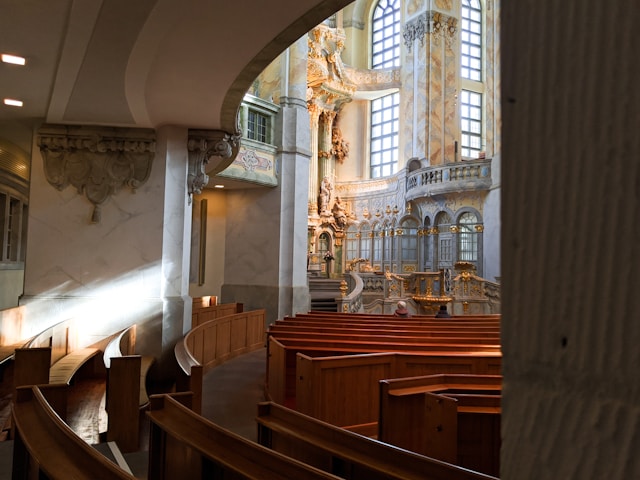
Regina Mundi: Unveiling the Queen of the World
Introduction
Regina Mundi, a Latin phrase that translates to “Queen of the World,” holds a significant place in Catholic tradition, representing the Virgin Mary’s exalted status and her role as the intercessor and protectress of humanity. This blog post delves into the multifaceted aspects of Regina Mundi, exploring its origins, iconography, and the profound impact it has had on Christian spirituality.
Historical Origins
II.a. Ancient Roots
The concept of Mary as Queen has ancient roots, reaching back to the Old Testament. In the Book of Esther, Queen Esther’s story serves as a prefiguration of Mary’s intercessory role. She bravely approached King Xerxes to plead for the lives of her people, mirroring Mary’s role as a mediator between God and humankind.
II.b. Medieval Development
During the Middle Ages, the devotion to Regina Mundi flourished. St. Bernard of Clairvaux was instrumental in promoting this devotion, emphasizing Mary’s Queenship as a reflection of her unique grace and her role as the spiritual Mother of the Church.
Iconography of Regina Mundi
III.a. Paintings and Mosaics
Artistic representations of Regina Mundi have captured the hearts and minds of believers for centuries. In paintings and mosaics, Mary is often depicted seated on a throne, adorned with a crown and scepter. She holds the Christ Child in her arms, symbolizing her role as the Mother of God.
III.b. Statues
Statues of Regina Mundi are also common in Catholic churches and shrines. These statues range from small and delicate to grand and imposing, reflecting the diverse cultural traditions and artistic styles.
Mary’s Queenship in Catholic Theology
The doctrine of Mary’s Queenship is rooted in her unique relationship with God and humanity. As the Theotokos, the Mother of God, Mary’s status is elevated above all other creatures. Her assumption into heaven completes her Queenship, symbolizing her victory over sin and death.
Devotions to Regina Mundi
IV.a. Litany of the Blessed Virgin Mary
The Litany of the Blessed Virgin Mary includes the invocation “Regina Mundi, ora pro nobis” (“Queen of the World, pray for us”), acknowledging Mary’s intercessory role and her power to mediate graces from God.
IV.b. Rosary Prayer
The Rosary, a popular Catholic devotion, includes several prayers to Regina Mundi, such as “Holy Mary, Queen of Heaven and Earth” and “Hail, Holy Queen.”
Role in Christian Spirituality
- Mediatrix of Grace: Mary is believed to be the channel through which God’s graces are dispensed to the world.
- Intercessor: As Queen, Mary acts as an intercessor between humanity and God, pleading for their needs and forgiveness.
- Model of Faith and Holiness: Mary’s life and virtues serve as an example for Christians to strive for holiness and unwavering faith.
Contemporary Relevance
V.a. Feminism and Mary’s Queenship
In recent years, there has been a growing interest in exploring Mary’s Queenship from a feminist perspective. Some feminists see Mary as a symbol of empowerment and leadership, highlighting her strength and agency as a woman.
V.b. Ecumenical Dialogue
Mary’s Queenship has also played a role in ecumenical dialogue, as it is a belief shared by various Christian traditions, including the Catholic, Orthodox, and some Protestant denominations.
Conclusion
Regina Mundi, Queen of the World, remains a powerful and enduring symbol in Catholic spirituality. Through her Queenship, Mary serves as an intercessor, a model of virtue, and a reminder of humanity’s hope for salvation. Understanding and embracing the multifaceted nature of Regina Mundi enriches our appreciation of the Virgin Mary’s role in Christianity and inspires us to strive for holiness in our own lives.
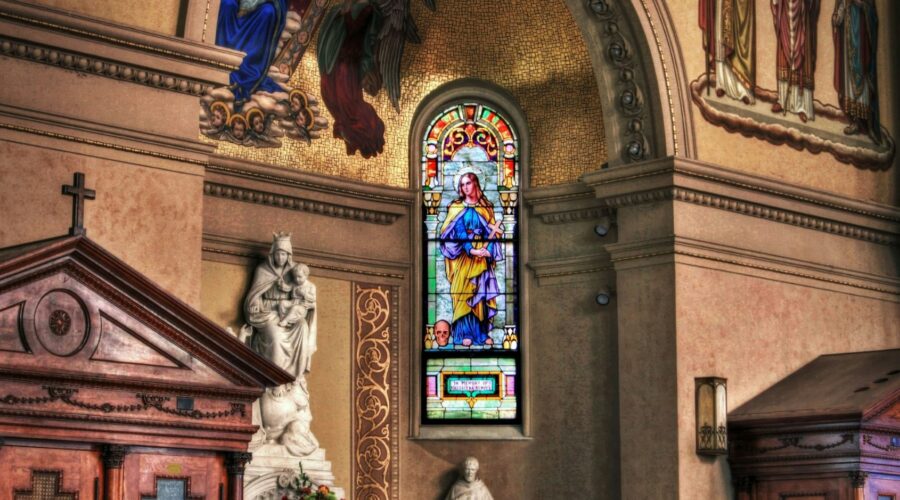
Immerse Yourself in the Traditions of Orthodox Christmas: A Comprehensive Guide
Introduction
Orthodox Christmas, also known as Nativity or Epiphany, is a significant religious observance deeply rooted in tradition and symbolism. This blog post delves into the rich tapestry of Orthodox Christmas, exploring its origins, customs, and rituals.
Historical Roots
Julian Calendar
Orthodox Christians adhere to the Julian calendar, which precedes the Gregorian calendar by 13 days. Thus, they celebrate Christmas on January 7th, while Western Christians celebrate on December 25th.
Eastern Orthodox Church
Orthodox Christmas is mainly celebrated by churches adhering to the Eastern Orthodox tradition, which includes Greek Orthodox, Russian Orthodox, and other Eastern European Christian denominations.
Preparations and Festivities
Advent
In the weeks leading up to Christmas, Orthodox Christians observe a period of fasting and spiritual reflection known as Advent, similar to its Western counterpart.
Christmas Eve
On Christmas Eve, the fast is broken with a traditional Christmas Eve dinner called Svyat Vecher, featuring 12 meatless dishes representing the twelve apostles.
Church Services
Throughout Christmas Eve and Christmas Day, Orthodox churches hold elaborate services, including the Royal Hours, Midnight Liturgy, and Divine Liturgy.
Christmas Day Customs
Star of Bethlehem
On Christmas Day, Orthodox Christians often sing carols and display a star representing the Star of Bethlehem, which guided the Magi to the newborn Jesus.
Gift-Giving
Gift-giving is not as common in Orthodox Christmas as it is in Western traditions; instead, the focus is on family gatherings and sharing food.
Christmas Feast
After attending church services, families gather for a festive feast featuring traditional dishes like kutia (a wheat porridge) and vazhouli (a meat pie).
Epiphany
Importance
Epiphany, celebrated on January 19th, commemorates the baptism of Jesus Christ and is considered as important as Christmas in some Orthodox traditions.
Water Blessing
On Epiphany, priests bless water in churches and rivers, and it is believed to have healing and purifying properties.
Significance and Symbolism
Spiritual Rebirth
Orthodox Christmas represents a time of spiritual renewal and rebirth, a celebration of the Incarnation of Christ and the promise of salvation.
Community and Tradition
The traditions and rituals of Orthodox Christmas strengthen community bonds and foster a sense of belonging and continuity.
Additional Information
Dates and Variations
The exact dates and customs of Orthodox Christmas may vary slightly among different Orthodox churches.
Iconography
Orthodox Christmas is often depicted in icons, which are religious paintings that play a significant role in the Eastern Orthodox tradition.
Traditional Foods
Dish Description Kutia A wheat porridge with honey, poppy seeds, and nuts Vazhouli A meat pie with a sweet or savory filling Kozunak A sweet bread with raisins and walnuts Conclusion
Orthodox Christmas is a rich and meaningful celebration rooted in tradition and faith. It is a time for spiritual renewal, community, and the joy of welcoming the newborn Christ. As Christians around the world celebrate the birth of Jesus, we invite you to delve into the unique traditions and customs of Orthodox Christmas and gain a deeper understanding of its significance.
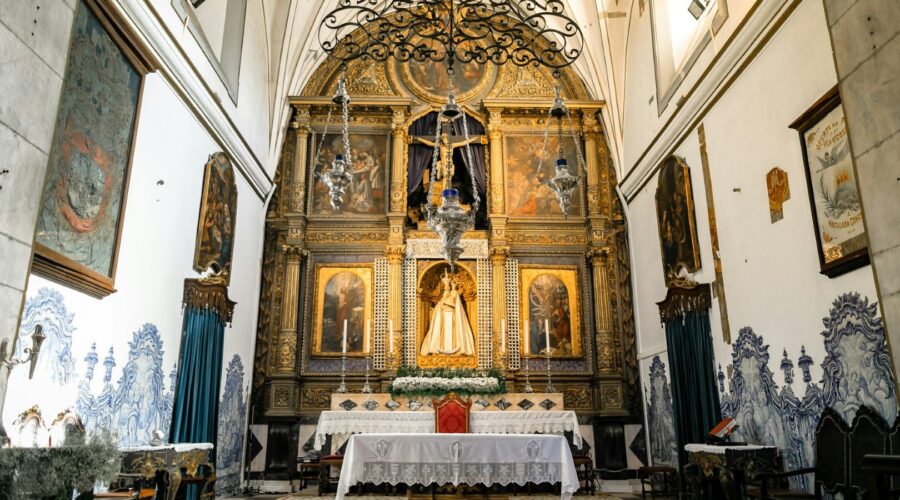
The Sacred Sanctuary: Our Lady of Lourdes Church, A Spiritual Haven
Our Lady of Lourdes: A Story of Faith and Healing
Nestled in the heart of France’s Lourdes, Our Lady of Lourdes Church stands as a beacon of hope and spirituality, attracting millions of pilgrims annually. The church is named after the Blessed Virgin Mary, who appeared to a young peasant girl named Bernadette Soubirous in 1858. During the apparitions, Mary identified herself as “the Immaculate Conception” and instructed Bernadette to dig in a nearby grotto, where a miraculous spring emerged. This spring is believed to possess healing properties, and countless pilgrims have reported miraculous cures after bathing or drinking its waters.
The Apparitions of Lourdes
Bernadette Soubirous was a 14-year-old asthmatic when she first encountered the Blessed Virgin Mary. The apparitions occurred in the grotto of Massabielle over a period of several months. During these apparitions, Mary conveyed messages of repentance, prayer, and penance. She also instructed Bernadette to build a chapel at the site. Pilgrims from around the world continue to flock to Lourdes, hoping to experience the same spiritual healing and peace as Bernadette.
The Basilica of Our Lady of Lourdes
Constructed in the late 19th century, the Basilica of Our Lady of Lourdes is an architectural masterpiece, characterized by its neo-Gothic and Byzantine influences. The basilica comprises two distinct churches beneath one roof: the Upper Basilica and the Lower Basilica.
Upper Basilica
The Upper Basilica is a cavernous and brightly lit space, accommodating over 20,000 worshippers. Its interior is adorned with vibrant stained glass windows depicting scenes from the life of Christ and the Virgin Mary. The main altar features a statue of the Virgin of Lourdes, which is said to have been carved from the same rock as the grotto where the apparitions took place.
Lower Basilica
Beneath the Upper Basilica lies the Lower Basilica, an intimate and atmospheric space where Bernadette witnessed the apparitions. The grotto of Massabielle is located within the Lower Basilica, and pilgrims can touch the rock where the spring emerged and pray at the shrine.
Pilgrimage to Lourdes
Each year, millions of pilgrims from across the globe visit Lourdes seeking spiritual renewal, healing, and intercession. The pilgrimage to Lourdes is a deeply moving experience for many, providing opportunities for prayer, meditation, and fellowship. Pilgrims can participate in a variety of devotional activities, including daily processions, rosary recitals, and the celebration of Mass.
Sanctuary for the Sick
Lourdes is particularly renowned for its sanctuary dedicated to the sick. Pilgrims with physical or spiritual ailments can receive care and support from medical professionals and religious volunteers. The sanctuary includes a medical facility where pilgrims can receive treatment and a hospice for those in need of end-of-life care.
Lourdes Today
Today, Our Lady of Lourdes Church remains a vibrant spiritual center and a significant pilgrimage destination. The grotto of Massabielle continues to attract countless pilgrims seeking healing and inspiration. The church is also a popular tourist destination, drawing visitors keen on exploring its architectural beauty and witnessing the unfolding of faith.
Additional Information
Visiting Our Lady of Lourdes Church
* The church is open daily to pilgrims and visitors.
* Guided tours are available in various languages.
* It is advised to book accommodations in advance, especially during peak pilgrimage seasons.Accommodation and Dining
* Numerous hotels, guesthouses, and restaurants are available in Lourdes.
* Pilgrims can also opt for the on-site accommodations provided by the sanctuary.Getting to Lourdes
* Lourdes is well-connected by train and bus from major cities in France and Europe.
* The nearest airport is Tarbes-Lourdes-Pyrénées Airport.Official Website
* The official website of the Sanctuary of Our Lady of Lourdes: https://www.lourdes-france.org/en/
Conclusion
Our Lady of Lourdes Church is a sacred place where faith, healing, and pilgrimage converge. The apparitions of the Blessed Virgin Mary and the miraculous spring have made Lourdes a beacon of hope for millions worldwide. Whether seeking spiritual renewal or seeking healing, pilgrims find solace and inspiration within the walls of this hallowed sanctuary.
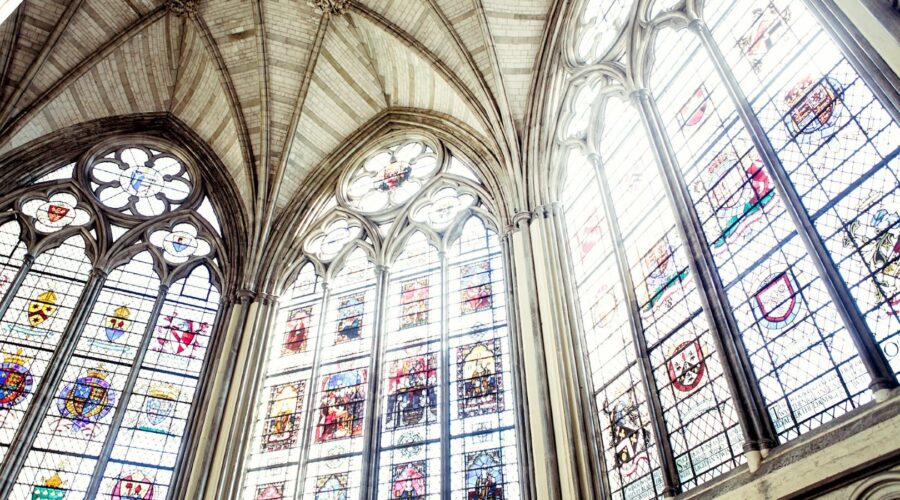
Discover the History, Architecture, and Community of St. John Neumann Church
Deepen your understanding of St. John Neumann Church and its rich legacy through this comprehensive blog post. Delving into its history, architectural marvels, and the vibrant community it fosters, this guide offers valuable insights and information.
A Historical Tapestry
St. John Neumann Church boasts a captivating history that dates back to the late 19th century. Founded in 1891, it served as a beacon of faith and community for German immigrants settling in the area.
Founding Fathers
The visionary founders of the church were a group of dedicated German immigrants who sought to establish a spiritual home in their new surroundings. Led by Father Francis X. Seelos, they gathered in modest quarters before erecting a permanent structure.
- Father Francis X. Seelos (1840-1909)
- Rev. Joseph A. Kraus (1862-1918)
Growth and Expansion
Over the years, St. John Neumann Church witnessed tremendous growth, mirroring the expanding German community. In the early 20th century, a new and larger church building was constructed, reflecting the thriving congregation.
Architectural Masterpiece
The architectural grandeur of St. John Neumann Church stands as a testament to the skill and artistry of its builders. Designed in the Romanesque Revival style, the church features:
Distinctive Features
The church’s exterior showcases an imposing facade adorned with intricate carvings, arched windows, and a massive bell tower. Inside, soaring ceilings, stained glass windows, and elaborate murals create a breathtaking sanctuary.
- Twin spires reaching towards the heavens
- Arched stained glass windows depicting biblical scenes
- Ornate murals adorning the walls and ceiling
Symbolism and Meaning
The church’s architectural elements carry profound symbolism, reflecting the Catholic faith and the values of the German community. The twin spires represent the connection between heaven and earth, while the stained glass windows narrate sacred stories.
A Vibrant Community
Beyond its architectural beauty, St. John Neumann Church is a vibrant and welcoming community. Members gather for worship, fellowship, and a wide range of activities:
Liturgy and Worship
The church offers a rich liturgical experience, including daily Mass, Adoration, and sacraments. Special celebrations, such as Christmas and Easter, are marked with festive services and traditions.
Community Outreach
St. John Neumann Church is deeply committed to serving the surrounding community. Through outreach programs, the church provides support to those in need, fosters interfaith dialogue, and promotes social justice.
- Food pantries and soup kitchens
- Support groups and counseling services
- Interfaith initiatives and community events
Fellowship and Growth
The church offers opportunities for spiritual growth and fellowship through:
- Bible study groups and retreats
- Youth and adult faith formation programs
- Community gatherings and social events
St. John Neumann Church stands as a vibrant and enduring symbol of faith, heritage, and community. Its rich history, architectural splendor, and dedicated congregation make it a cornerstone of the surrounding area and a source of spiritual nourishment for all who enter its doors.
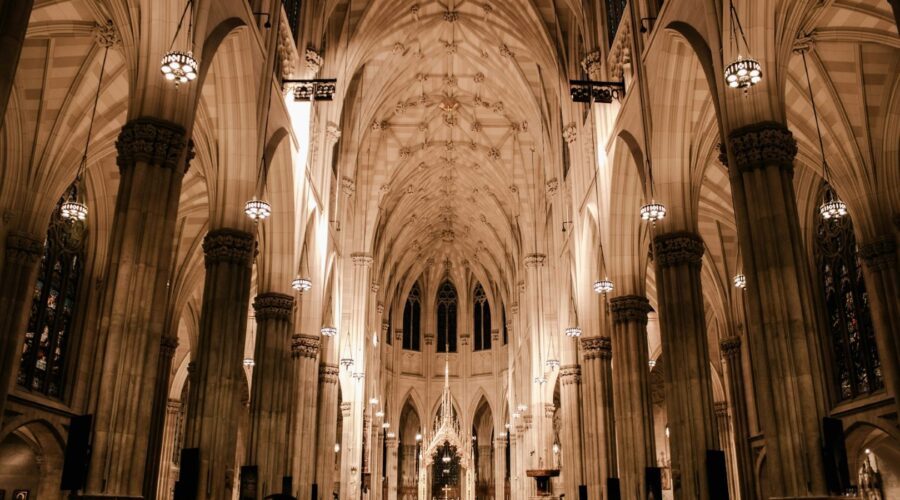
I Am the Good Shepherd: Understanding Jesus’ Analogy
Jesus often used parables and analogies to teach his disciples and the crowds that followed him. One of his most well-known analogies is the Parable of the Good Shepherd, which he used to describe his relationship with his followers. In this blog post, we will explore the meaning of this analogy and how it can help us understand Jesus’ role as our shepherd.
The Parable of the Good Shepherd
The Parable of the Good Shepherd is found in the Gospel of John, chapter 10. In this parable, Jesus compares himself to a shepherd and his followers to sheep. He says that he is the good shepherd who lays down his life for his sheep, while the hired hand, who is not the true shepherd, runs away when he sees the wolf coming. Jesus also says that he knows his sheep and they know him, and that he leads them to green pastures and still waters.
The Characteristics of a Good Shepherd
There are several characteristics of a good shepherd that Jesus highlights in this parable:
- He knows his sheep and they know him (John 10:14)
- He cares for his sheep and protects them from danger (John 10:11)
- He leads his sheep to green pastures and still waters (John 10:9)
- He is willing to lay down his life for his sheep (John 10:11)
Jesus is the ultimate example of a good shepherd. He knows us intimately and loves us unconditionally. He protects us from spiritual danger and leads us to a life of peace and fulfillment. He has even laid down his life for us, so that we can have eternal life.
How to Follow the Good Shepherd
If we want to follow Jesus, the Good Shepherd, we need to:
- Listen to his voice (John 10:27)
- Stay close to him (John 10:28)
- Trust in his care and protection (John 10:29)
- Be willing to follow him wherever he leads (John 10:38)
When we follow the Good Shepherd, we can be sure that we are on the right path. He will lead us to a life of purpose and meaning, and he will never leave us alone.
The Benefits of Following the Good Shepherd
There are many benefits to following the Good Shepherd. Some of these benefits include:
- Protection from spiritual danger
- Guidance and direction for our lives
- Peace and fulfillment
- Eternal life
If you are not already following Jesus, the Good Shepherd, I encourage you to do so today. He is waiting for you with open arms, and he will never let you down.
Conclusion
The Parable of the Good Shepherd is a beautiful analogy that teaches us about Jesus’ love and care for us. He is the good shepherd who knows us, cares for us, and protects us. He is also the shepherd who is willing to lay down his life for us. If we want to follow Jesus, we need to listen to his voice, stay close to him, trust in his care and protection, and be willing to follow him wherever he leads. When we follow the Good Shepherd, we can be sure that we are on the right path and that we will never be alone.
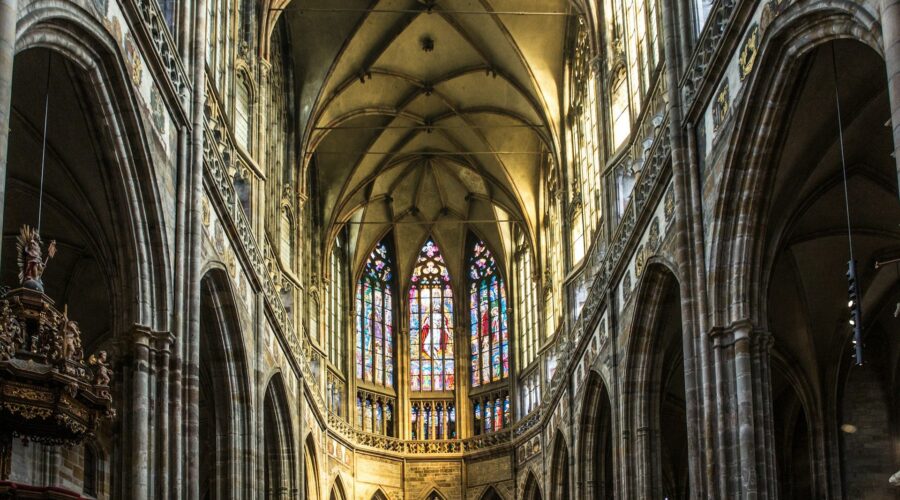
Pastor Allen Jackson: A Guiding Light in Spirituality and Community
Introduction
Pastor Allen Jackson is a renowned spiritual leader, motivational speaker, and philanthropist who has dedicated his life to empowering individuals, fostering community, and spreading the message of hope and love. With a profound understanding of the human spirit and a compassionate heart, he has touched countless lives, inspiring them to live purposeful and fulfilling lives. In this comprehensive blog post, we will delve into the remarkable journey of Pastor Allen Jackson, exploring his teachings, initiatives, and the profound impact he has made on the world.
Early Life and Calling
Humble Beginnings
Allen Jackson was born in a modest family in the heart of Mississippi. From a young age, he exhibited a deep curiosity about spirituality and a desire to make a difference in the world. Inspired by the teachings of his grandmother, a devout Christian, he immersed himself in religious studies and sought guidance from mentors who recognized his potential as a spiritual leader.
Divine Calling
At the age of 21, Allen Jackson experienced a profound spiritual awakening that transformed his life. He felt an overwhelming calling to serve as a pastor and share the transformative power of God’s love with others. Embracing his destiny, he pursued theological education and was ordained as a minister.
Pastoral Leadership and Ministry
Harvest Time Church
In 1990, Pastor Allen Jackson founded Harvest Time Church in Memphis, Tennessee, which has grown into a vibrant and thriving congregation over the years. Under his visionary leadership, the church has become a beacon of spiritual renewal, attracting individuals from all walks of life seeking guidance, support, and a sense of community.
Empowering Sermons
Pastor Jackson is known for his powerful and transformative sermons. His messages are deeply rooted in scripture and delivered with a captivating blend of personal anecdotes, practical wisdom, and unwavering faith. Through his sermons, he challenges his congregation to embrace their potential, overcome adversity, and live lives that are pleasing to God.
Community Outreach
Beyond the pulpit, Pastor Allen Jackson is deeply committed to community service. He has established numerous initiatives aimed at addressing social issues, providing support to the needy, and fostering a sense of unity and cooperation within the community. His outreach programs include food banks, clothing drives, mentoring programs for youth, and initiatives to combat poverty and homelessness.
Motivational Speaking and Inspiration
Keynote Addresses
Pastor Allen Jackson is a sought-after motivational speaker who has delivered keynote addresses to audiences around the world. His speeches are filled with wisdom, encouragement, and a message of hope that resonates with people from all backgrounds. He inspires individuals to overcome obstacles, pursue their dreams, and live lives of purpose and fulfillment.
Authorship
As an accomplished author, Pastor Jackson has penned several books that explore themes of faith, spirituality, and personal growth. His writings provide practical guidance, thought-provoking insights, and a roadmap for individuals seeking to deepen their connection with God and live a life of meaning and joy.
Philanthropy and Social Activism
Philanthropic Endeavors
Pastor Allen Jackson is a generous philanthropist who has dedicated himself to supporting various charitable causes. He has established foundations that provide financial assistance to students pursuing higher education, fund research on health and social issues, and support initiatives that promote peace and understanding.
Social Activism
As a vocal advocate for social justice, Pastor Jackson uses his platform to address important issues such as racial equality, poverty, and environmental protection. He believes that the church has a responsibility to speak out against injustice and work towards creating a more equitable and compassionate society.
Personal Life and Legacy
Family and Relationships
Pastor Allen Jackson is a devoted family man. He is married to his wife, Deborah, and together they have raised a beautiful family. His children and grandchildren hold a special place in his heart, and he cherishes the time he spends with them.
Legacy and Impact
Pastor Allen Jackson’s legacy is one of faith, love, and service. Through his pastoral leadership, motivational speaking, philanthropic endeavors, and social activism, he has touched the lives of countless individuals, inspiring them to live more meaningful and fulfilling lives. His unwavering belief in God’s love and his commitment to making a positive impact on the world continue to resonate with people around the globe.
Conclusion
Pastor Allen Jackson is a true spiritual giant of our time. His teachings, initiatives, and unwavering faith have transformed the lives of countless individuals, empowering them to overcome adversity, pursue their dreams, and live lives that are pleasing to God. As a beacon of hope, inspiration, and community, he continues to inspire and guide people on their spiritual journeys, leaving an enduring legacy that will impact generations to come.